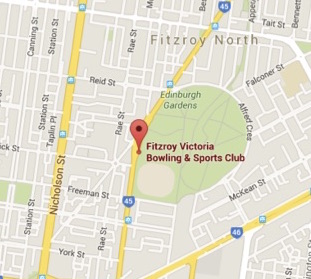Do you want to start a Toastmasters club?
We recently started a community club in Fitzroy, and we’re ready to charter after only two months. It’s one of the most challenging and exciting things I’ve done in Toastmasters, and I recommend it to anyone wanting to enhance their Toastmasters experience.
Today I want to share the seven secrets I uncovered by going through this process.
1. Get the right people for the job
I wanted to gather four people who were prepared to not only start the club, but also stay with it for at least its first year of operation. By doing that, I felt we could give the club its best chance of survival.
The two sponsors ended up being Cleo Pitt and me, with the two mentors being Jo Evans from Parkville and Christine Dimitros (Club Growth Director). I knew I could rely on these people to work together to achieve our goal.
2. Explore New Territory
We decided to start our club in Fitzroy.
Why Fitzroy? I hear you ask.
Starting a new club in an area where there are no other clubs will give you a better chance of succeeding. The area may eventually be capable of hosting half-a- dozen clubs, but why not stake out new territory?
The first step is to go to the District 73 website and click on ‘Find A Club’. What you’re looking for is an area where there aren’t already any clubs. Fitzroy was one place. Collingwood and Northcote are others (hint, hint).
The blank spot on the map is where you want to position your club. The venue needs to have a pleasant environment, charge reasonable rent, and have access to public transport and parking. Listen to your gut: if you’re not sure you’d want to go there, then other people will probably feel the same.
3. Timing is everything
Actually, timing isn’t everything, but it helps. You know those New Year’s resolutions we all make at the start of the year? One that people often make is to improve their public speaking. Because of this, we set our demonstration meeting for the 18th of January.
4. Spreading the word
We did three kinds of marketing: a pamphlet drop to the local area (2,000 leaflets), emails to local community organisations, and a group on Meetup.com.
I really must put in a plug for Meetup. It’s a social networking website where you pay a fee to promote your group. People go there to see what’s on in their local areas. You’ll get a lot of tyre kickers, but that’s not all bad. A big audience is never a bad thing.
Meetup brought about 40 people to our demonstration meeting and many more over the following weeks. We very quickly ended up with 33 members—19 brand new members and 14 dual or reinstated members. We’ve temporarily closed our membership so we can focus on the people we’ve got.
5. Woohooing and Professionalism
What is woohooing?
It means we don’t just clap when members get up to speak. We cheer, clap, and yell encouragement like we’re high on caffeine and happy pills. Toastmasters is about building self-esteem and confidence, and we do that by showing our appreciation.
I’ve seen people at Fitzroy who have looked terrified when they’ve gotten up to speak. By the time they’ve finished, the cheering and applause is so encouraging that they’ve broken into a broad smile and immediately signed up to do another role the next week.
The flipside to woohooing is professionalism: just because we have a good time doesn’t mean we’re not professional.
People who join Toastmasters are buying into a system, and they deserve value for their time, money, and effort. This means we run professional meetings according to Toastmasters procedures. We try to get all the basics right—the meetings start and finish on
time, we fill all the usual roles and we use the PIP system for evaluations.
One of the manuals issued by Toastmasters International is called, ‘Master Your Meetings’. It details the basics of the meetings—what works and what doesn’t work. It’s invaluable for new clubs (and those of us in older clubs can learn from it too!)
6. Evaluations rule
When you have 19 brand new people in a club, it’s important to get them involved in all aspects of club operations. This means getting them to deliver high quality evaluations as soon as possible.
To facilitate this, we’ve developed a system where people who complete their icebreaker are scheduled to evaluate a speaker at the next meeting.
At that meeting, we assign them an ‘evaluation buddy’, a long time Toastmaster who has plenty of experience. This person leaves the room with the new evaluator and, during the break, helps them to prepare their evaluation. This one-on- one attention goes a long way in educating the new member about evaluations.
7. Fun and Learning go hand in hand
The club that parties together stays together. The more friendships that are formed in a club, the more likely the new members are to continue coming to meetings. To facilitate this, we’ve started planning some future social events—a visit to another club and a meeting in the park.
Then there’s our charter dinner which we’re considering combining with a barefoot bowling event. Who says that charter dinners have to be serious occasions?
When I look around the room at Fitzroy, I can already see some future leaders. A few of them will go on to charter their own clubs. And how rewarding is that? To see someone aiming high and achieving their goals; to see someone becoming better than even they thought possible.
When that happens, you’re entitled to a sense of quiet satisfaction.
You helped make that happen.
And isn’t that what Toastmasters is all about?

